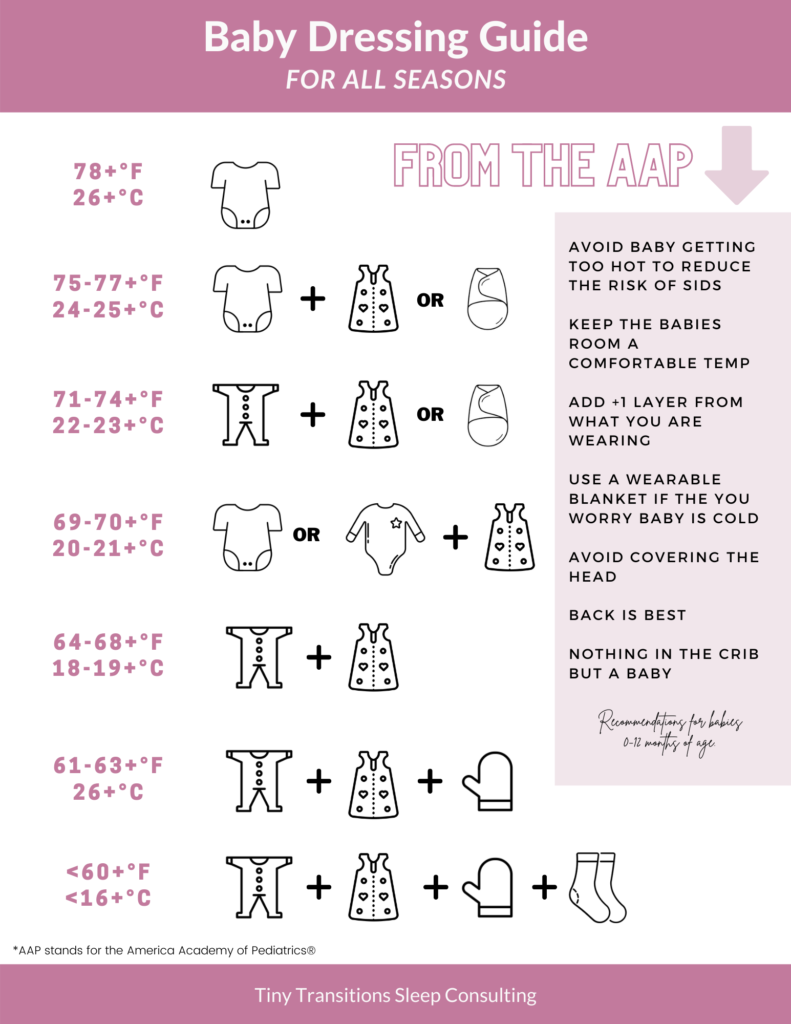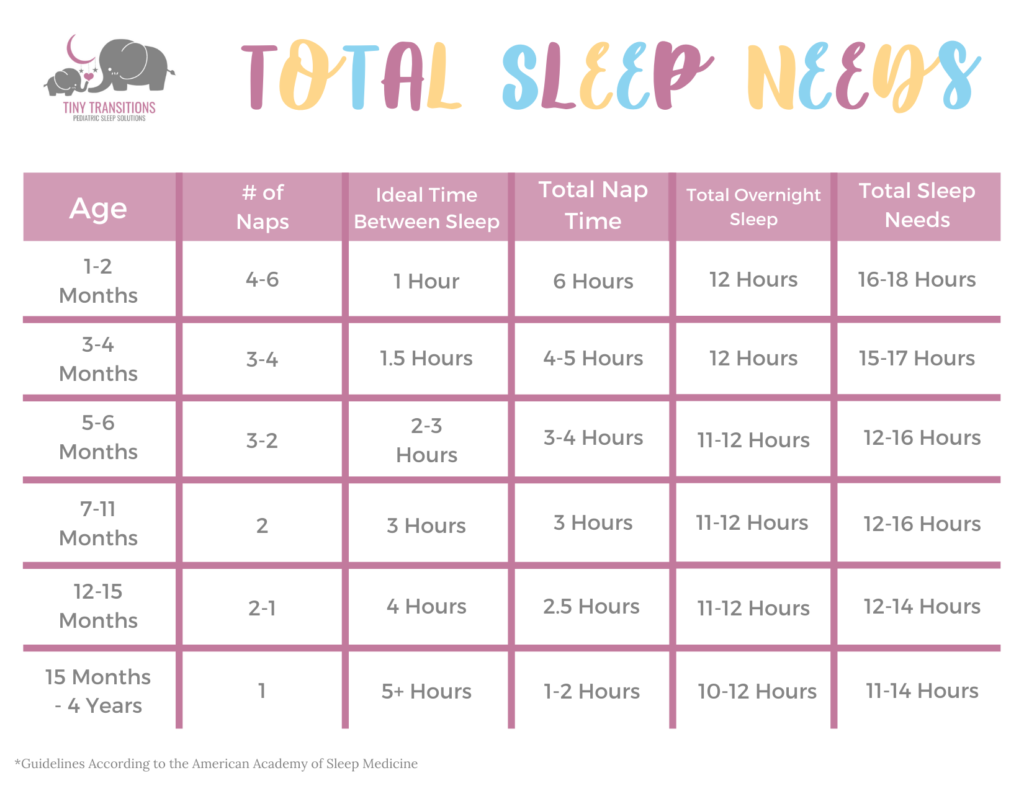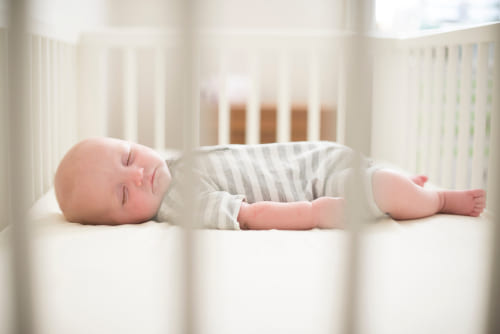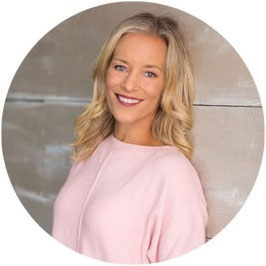Many new babies start off their lives in a bassinet that is placed bedside, to allow parents the convenience of tending to newborns a bit more easily during frequent overnight wakings to feed or comfort vs. making their way like ‘mombies’ down the hall several times a night. This aligns with the American Academy of Pediatrics recommendations for safe sleep. Everyone has a unique sleep situation. Some of our sleep coaching clients are in a 1 BR apartment in New York, a Cape Cod Style house in Massachusetts with parents on one floor and kids on the other, or they are in houses as big as my entire caul-de-sac with their own wings, night nanny’s, and all the things.
The first and most important step regarding where your baby sleeps at night is that it needs to be a safe space, free from loose items, loveys, soft blankets, or anything that poses a potential suffocation hazard. When you are pregnant and trying to determine the best crib, bassinet, or pack-n-play for your baby, you have quite a large number of offerings and if I can be frank here – your baby doesn’t care if it’s round or rectangular, they are not ‘afraid’ of how big the crib and they are going to be very loud, even when asleep the first few months of life. Now that we have that covered, let’s talk about when to transition them to a crib if you started in the bassinet or a Pack-n-Play in your room.
When is the Best Time to Move a Baby to a Crib?
The best age to transition a baby from a baby bassinet to a crib is between 3 to 5 months of age. It is then that the sleeping patterns shift from stage to cycle-based sleep & become more regulated. Babies become more aware of their surroundings as you come out of the 4th trimester and you can potentially start to build a resistance to the crib if they have never slept in it. The sooner you make the move, the easier the transition is for the baby, like anything. You would never want to make the transition for the first time while on a vacation, because the baby will likely already be tired from a busy day, learning a new sleep environment can pose the risk of some prolonged protests going to sleep and make for a rocky trip.
There is plenty of education on the AAP safe sleep guidelines. The AAP recommends a child transition to their own room between 6 & 12 months. Luckily, the Consumer Product Safety Commission {CPSC} is available with some additional education about their top product pick {and recalled products} to keep parents informed, educated, and most importantly, to keep babies safe.
How to Prepare to Transition Baby to the Crib from a Bassinet:
To begin your transition, the APP has shared its advice on how to make this process a bit smoother and those tips include:
- Babies should sleep on a firm and flat mattress with nothing but the baby in the crib. Softer mattresses make it harder for babies to push away and should they accidentally roll overnight onto their stomachs, they could risk suffocation if a soft mattress cuts off their air supply.
- The environment should be comfortable, ideally between 68 & 70 degrees F, which can increase sleep comfort and quality.

- A full-size crib is recommended, to account for growth spurts they will have these first years and is versatile, allowing for the baby to find a comfortable position to sleep in.
- Babies should always be placed down on their backs – which research proves reduces the risk of SIDS.
- Pacifiers, which can also reduce the risk of SIDS can be placed in the crib, but, I would caution that if you are having to replace it 14 times a night, just get rid of it, as it will become a sleep-prop that will prohibit their consolidation of the restorative sleep babies need.
How to Make the Transition to the Crib:
- First, starting with one nap a day in the crib is a great way to start, even from birth, with familiarizing babies with the crib if they are also sleeping in a bassinet, and building on that over time. This helps ensure it’s not a foreign environment. I recommend nap #1 as that’s the one I see is the easiest with the clients I have been providing sleep solutions for since 2015. I believe this is because the sleep pressure {the hormone adenosine} is consistent in the morning, vs. the afternoon, when babies run the risk of colic, overtired, uncomfortable, and harder to settle for naps.
- Next, ensure the space is comfortable. I love these Chenille sheets from Pottery Barn {thanks to my best friend Linsdey who turned me on to these when Max was born.} They also travel easily with you and can help make a ‘new’ sleep space comfortable and familiar regardless of where you are for the baby.
- Ensure the baby is not overtired, this will ease the transition to the crib, ensuring a baby isn’t overtired {and overstimulated} the first time their head meets the mattress.
 Sleep is a skill – build it slowly. Start with 1 nap a day in the crib and transition gradually over the course of a week to more sleep in the crib, including the other naps, and finally bedtime then overnight. You need to support this transition objectively and not run into the nursery for every peep or fart.
Sleep is a skill – build it slowly. Start with 1 nap a day in the crib and transition gradually over the course of a week to more sleep in the crib, including the other naps, and finally bedtime then overnight. You need to support this transition objectively and not run into the nursery for every peep or fart.- Give them space to find comfort. Allow them to learn their new space and observe. Many babies I work with sleep coaching will wiggle to the corner or turn to their sides to push their head or feet against the crib slats. This is comfortable for them, they are sensory seeking and it’s normal behavior for them to calm and soothe.
Baby Monitors and Sound Machines for Safe Sleep
The amazing technology evolution in the space of baby sleep has come a long way in a short time. They have so many amazing ways to ensure the baby is safe, and comfortable and can be checked in on without the need to go into the room 400 times a day or overnight, just to see what’s happening. Monitors also show temperature and can alert you should a room get too hot or too cold for the baby to sleep in.
Noise machines I love and recommend the heartbeat for a newborn, then after the first week or two of life, starting to transition to white noise, which can stay with them for many years to come and prevent a baby from waking with every little noise in the house. I would NOT recommend using a night light for babies, it can disrupt the deep sleep from the ambient light, and just in case you need reassurance, babies are not afraid of the dark.
Be Patient with the Bassinet to Crib Transition
Like anything new, it takes a bit to adjust. Start gradually and slowly build on how much a baby is sleeping in the crib. In our home {& because of the room layout in our first house} we had to put the crib in their own room from day 1 and that’s where both our children slept. We kept the crib safe, monitors on, and doors open. You do you, transition when you are ready. Babies do tend to sleep better in their own space, so when you as a family are ready – get started and give it time. Remember, if you need coaching or support, you can set up a free sleep coaching call with a member of the team and discuss our newborn parenting education & coaching – our mission is to ensure every parent feels confident and empowered.
Also, join our free sleep community here, called Slumber Made Simple, where we provide coaching, support, and education to help you with short naps, early wakings, children sleeping through the night, and all the things that come with being a parent today.


